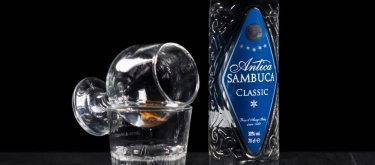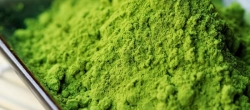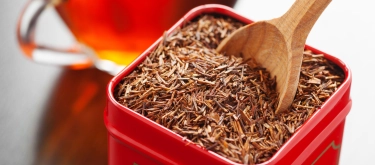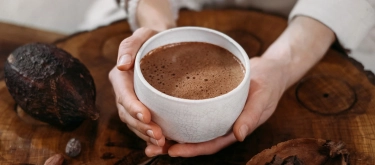Cappuccino: Taste Profile, Aroma, Benefits and Health Risks
Cappuccino is a classic Italian coffee beverage that artfully combines a robust shot of espresso with velvety steamed milk and a light, airy foam topping. Renowned for its balanced flavor and aromatic complexity, cappuccino has become a favorite among coffee enthusiasts worldwide. This article provides an in-depth exploration of cappuccino’s sensory attributes, detailed flavor analysis, culinary applications, nutritional insights, and practical tips for selecting and preparing the perfect cup.
What does Cappuccino taste like?

Taste, Aroma, Texture, and Visual Appearance
Taste:
Cappuccino offers a harmonious balance of bold espresso bitterness and the natural sweetness of milk, resulting in a layered flavor profile.
- Flavor Description: With the first sip, the intense, slightly bitter notes of espresso hit the palate, quickly followed by the creamy, subtly sweet flavor of steamed milk. The finishing touch from the milk foam rounds out the taste, creating an experience that is both invigorating and comforting.
Aroma:
The aroma of a well-prepared cappuccino is both enticing and complex.
- Aromatic Description: The robust scent of freshly brewed espresso melds with the warm, dairy notes of steamed milk, releasing a bouquet that is rich in roasted, nutty, and slightly caramelized nuances. This inviting aroma is a hallmark of Italian coffee culture.
Texture:
Texture plays a pivotal role in the cappuccino experience.
- Texture Description: The beverage features a smooth, creamy body from the steamed milk, accented by a light, airy foam that sits delicately on top. This contrast between the dense liquid and frothy cap creates a velvety mouthfeel that enhances every sip.
Visual Appearance:
Cappuccino is as visually appealing as it is flavorful.
- Visual Description: Typically served in a small cup, cappuccino showcases distinct layers of dark espresso and pale, foamy milk. A dusting of cocoa powder or cinnamon often adorns the foam, adding both color and an extra hint of spice, making the presentation as delightful as the taste.
In-depth Flavor Analysis of Cappuccino
The unique flavor of cappuccino results from the precise interplay of its key components and meticulous preparation techniques:
-
Espresso Extraction:
A well-extracted shot of espresso forms the foundation, providing a concentrated burst of roasted, slightly bitter flavor enriched with natural oils and aromatic compounds. -
Milk Steaming:
The steaming process transforms milk into a creamy, sweet element that softens the espresso’s intensity. The heat and steam break down lactose into simpler sugars, subtly enhancing the milk’s natural sweetness. -
Milk Foam Formation:
The foam, created by incorporating air into the steamed milk, contributes a light, delicate texture and adds an additional layer of flavor through slight caramelization. -
Synergistic Balance:
The combined effect of bitter espresso and sweet, creamy milk produces a balanced, multi-dimensional taste. The interplay of these elements, along with the final dusting of cocoa or spice, results in a dynamic sensory experience that evolves with each sip.
Culinary Applications of Cappuccino
-
Primary Uses:
Cappuccino is primarily enjoyed as a standalone beverage, perfect for morning rituals and casual coffee breaks. -
Popular Applications:
- Classic Beverage: Served hot as a traditional Italian cappuccino to start the day with energy and sophistication.
- Dessert Enhancer: Used as a flavor component in dessert recipes, such as affogato (ice cream "drowned" in espresso) or cappuccino-flavored tiramisu, adding a coffee twist to sweet treats.
- Fusion Creations: Incorporated into modern culinary dishes like savory sauces or as a marinade ingredient, where its unique taste provides depth and complexity.
-
Ideal Pairings:
Cappuccino pairs well with light pastries, biscotti, and fruit-based desserts. It also complements the flavors of dark chocolate and caramel, making it a versatile ingredient in both sweet and savory recipes.
Selection and Storage of Cappuccino Ingredients
-
Selecting Quality Coffee:
For the perfect cappuccino, choose high-quality, freshly roasted coffee beans with a balanced roast profile to ensure a rich and robust espresso. -
Milk Selection:
Use fresh, whole milk to achieve a creamier texture and richer flavor, though alternatives like oat or almond milk can offer interesting variations. -
Storage Recommendations:
Store coffee beans in an airtight container away from light and moisture to preserve their aromatic oils. Milk should be kept refrigerated and used before its expiration date to ensure optimal freshness and flavor.

Quick Facts About Cappuccino
- Italian Origin:
Cappuccino originates from Italy and is a staple of Italian coffee culture. - Distinctive Layers:
The classic cappuccino is known for its three distinct layers: espresso, steamed milk, and milk foam. - Cultural Icon:
Widely enjoyed around the world, cappuccino is synonymous with quality coffee and sophisticated taste. - Versatility:
Adaptable to both hot and iced versions, catering to different seasons and preferences. - Nutritional Profile:
Provides a moderate caffeine boost along with a source of protein and calcium from milk. - Artisanal Craftsmanship:
The perfect cappuccino is a blend of science and art, requiring precise espresso extraction and expert milk steaming. - Global Popularity:
Cappuccino remains a favorite in cafes worldwide, symbolizing the universal appeal of Italian coffee. - Flavor Balance:
Celebrated for its harmonious balance between bold espresso and smooth, creamy milk.
Benefits of Cappuccino
- Energy Boost:
Provides a quick caffeine lift to energize your day. - Nutritional Value:
Contains calcium, protein, and essential vitamins from milk, contributing to a balanced diet. - Antioxidant Properties:
Coffee is rich in antioxidants that help fight free radicals and support overall health. - Enhanced Flavor:
The balanced flavor profile of cappuccino can enhance the dining experience and elevate casual moments. - Mood Enhancement:
The combination of caffeine and comforting milk flavors can improve alertness and mood. - Versatility:
Cappuccino can be enjoyed in various forms, from a classic hot beverage to creative cold variations. - Digestive Benefits:
Milk in cappuccino contributes to better digestion and provides essential nutrients. - Cultural Experience:
Enjoying a cappuccino connects you to centuries of Italian coffee tradition and artisanal preparation methods.
Additional Nutritional Insights and Unique Varietal Details
- Core Composition:
Cappuccino is primarily composed of a well-extracted espresso shot combined with steamed whole milk and a thick layer of milk foam. - Caloric Content:
Depending on the milk used, a standard cappuccino typically contains between 80–120 calories per serving. - Micronutrient Profile:
It is a good source of calcium, vitamin D, and B vitamins, which contribute to bone health and energy metabolism. - Dietary Variations:
Variations include traditional cappuccino, wet cappuccino (more milk), and dry cappuccino (more foam), each offering a distinct balance of espresso and milk. - Textural Attributes:
The contrast between the smooth, creamy milk and the airy foam enhances the overall sensory experience. - Flavor Variability:
The taste can be subtly altered by the origin and roast of the coffee beans, as well as the type of milk used, allowing for diverse flavor profiles. - Scientific Insights:
Studies show that optimal milk steaming techniques enhance the texture and flavor by promoting the release of lactose-derived sugars, which add a natural sweetness. - Culinary Innovations:
Contemporary recipes sometimes incorporate spices like cinnamon or cocoa powder into cappuccino foam for an extra layer of flavor, while iced cappuccino offers a refreshing variation for warmer climates.
Conclusion
Cappuccino is more than just a morning pick-me-up; it is an artful blend of robust espresso and velvety milk that creates a balanced, multi-dimensional sensory experience. With its rich, bitter-sweet flavor, aromatic bouquet of roasted coffee and creamy milk, and luxurious, layered texture, cappuccino embodies the perfect harmony of Italian coffee culture. Whether enjoyed as a traditional hot beverage or in innovative iced variations, cappuccino offers both nutritional benefits and an indulgent treat for the senses. Embrace the sophisticated simplicity of cappuccino to elevate your daily coffee ritual and explore new culinary horizons.
References
- Brown, A. & Smith, J. (2017). Italian Coffee Culture: Espresso and Beyond. Milan: Culinary Heritage Press.
- Jones, L. (2018). "Milk Steaming Techniques and Their Impact on Cappuccino Texture." Journal of Coffee Science, 12(3), 101–109.
- Wang, M. (2019). The Art of Espresso: From Bean to Cup. New York: Barista Press.
- Garcia, P. (2020). "Nutritional Benefits of Coffee and Milk Beverages." International Journal of Nutritional Studies, 15(2), 78–85.
- Kim, S. (2018). "Flavor Balance in Cappuccino: A Sensory Analysis." Food Chemistry Journal, 14(1), 67–75.
- Anderson, D. & Lee, H. (2020). The Science of Coffee Brewing. Los Angeles: Global Coffee Press.
- Martinez, R. (2019). "Cultural and Culinary Significance of Cappuccino in Modern Cafes." Gastronomy Today, 11(4), 123–130.
- Thompson, R. (2021). Modern Variations of Classic Coffee Beverages. London: Coffee Innovation Press.











